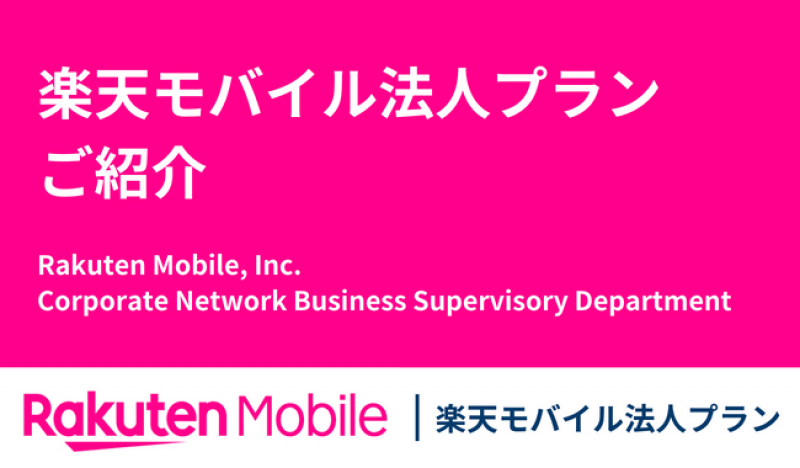多国籍チームをリモートで管理するための5つのコツ

ニューノーマルの時代においては、顔を合わせる機会が減っている環境下で同僚とチームワークよく仕事をしたり、国境を越えて母国語が異なるメンバーとプロジェクトを進めたり、また国内でも多様な雇用形態のメンバーと一緒に仕事をする機会が増えてきました。
国内外問わず、これまでの常識が覆る時代を生きているのです。
実際、オンライン会議で8人のメンバーで会議をした時のことです。参加者は5都市から参加し、また使用言語も4つとばらばら、所属部署も横断で参加していました。
それにもかかわらず、会議は時間通りに始まり、生産性高く議論が進み、予定通りに終了することができました。
このケースのようにめまぐるしく変化し、ますます多様化が進む中でも適切にチームの管理していくためにはどうしていくのがよいのでしょうか。
まずは、これまでの「当たり前」を忘れることが第一歩です。
本コラムでは、異なる文化、言語、国、時差を越えてリモートチームをより良くマネジメントするための5つのコツをご紹介します。
1)チームメンバーを適切に選ぶ

誰もがリモートで効率よく働けるわけではない、ということを理解しておくことが重要です。最初からその状況を見据え、チームを編成する際には、適切な人材を選ぶようにしましょう。人材の選定、選考をする際には、資格・経験・語学力・スキルセットはすべて重要です。普段と異なる環境でも実績を出せる自己規律、自己管理力も同じくらい重要視しましょう。
2) チーム共通のルールを早めに設定する

優秀な人材には、チームの根本となる基盤やルールを適切に浸透させ、日々の行動指針となるものを伝達することが、生産性高く働いてもらうコツです。
文化、言語、商習慣が異なるチームをマネジメントしている場合は特にルールが重要になります。例えば、韓国では、文書化されたと明確な指示がとても重要で、フィリピンでは、優秀な人材でも明確な命令がない限りはリスクを取ることに躊躇する傾向があるなど特徴があります。
このような特性を理解し、下記のような仕組みを作ることで、これらの課題を軽減することができます。
・全員が組織構造を理解できるような組織図を作成する
・上司は誰なのか、主要な意思決定者は誰なのか、等を記載したジョブディスクリプション
を作成する
・新しいチームメンバーには必ずオリエンテーションを行い、全員が知識を共有する
・定例会議のアジェンダを作成し、会議中に共有する
・開始時刻と終了時刻の設定-時差を考慮して設定(複数の時間帯や国がまたがる会議を計画
する際には、国際会議プランナーなどのツールを使用してください。)
・議事録担当を任命する(毎回異なる人へ ⇒ 一人ひとりが責任感を持って取り組むように
なります。)
・会議の「公式ミーティング言語」を指定する。
3) チームを信頼する

2020年の「ハードワーク」とはどのようなものでしたでしょうか?
これまで日本の多くの会社では、オフィスに物理的に出勤し、長時間パソコンの画面の前で仕事に取り組み、働き続けることだと認識されていました。
実際にハードワーク=オフィスに長時間「いる」ことを意味するアジアの国も多いです。
ただし、目の前にいなければ評価ができない、という状態は、リモートでは機能しません。
仮にできたとしても、望ましくないマネジメントスタイルですよね。
上手くいかない理由としては、チームの個々のメンバーの性格、文化、ワークスタイルの違いにあります。
あるメンバーはテレワークでも出勤でも1日の流れを変えたくないというメンバーです。このようなメンバーは、午前9時に開始し、現地時間の午後6時頃には終了するという、通常の仕事の一日を働く場所に関わらず維持しようとします。グローバルチームにおいてもスケジュールと会議時間がその就業時間を考慮している限り、何も問題がおきません。
一方で、規則に縛られずに仕事を進めていく働き方を好むケースです。
これらのメンバーはアウトプットを重視し、タスクや会議等の時間を軸に仕事を進め、自宅やカフェ、コワーキングスペースでプロジェクト単位でタスクをこなすのが好きなタイプです。
適切なメンバーを採用し、教育し、信頼することが大切です。
4) 全ての拠点において接続インフラを整えること

チームが成功するために必要なテクノロジーを確保すること。
ここを怠ると生産性の低下や士気の低下に繋がってしまいます。
・オリエンテーションの一環として、セットアップの支援と技術サポートをチームに提供
すること
・電話(固定電話)、メール、DM、WebexやZOOMなどのアプリ、Redmineなどのプロジェ
クト管理アプリ、ChatworkやSlackなどのチームアプリなど、利用可能なすべてのツールを
活用すること
・各コミュニケーション方法でどの技術ツールを使用するかの基準を設定する
(例えば、ビデオ会議にはWebexを使用し、メッセージングと音声のみの通話にはSlackを
使用するなど)。
5)リモートでも 定期的にチームで顔を合わせる

一日の終わりには、チームメイトと対面して話す機会を積極的に設けていくことが大事です。
少なくとも年に一度、できれば四半期ごとにチーム全員で集まる予算を会社として確保しておきましょう。
定期的に対面で顔を合わせることで、各チームメンバーがグループの目標/KPIと自身のために設定したものに対して説明責任を感じさせるための素晴らしい方法です。
このような定期的な対面でのやり取りは、仕事をスムーズに行い、仕事上の信頼関係を築くきっかけとなります。
リモートで仕事をするのは時には大変です。異なる文化を持つメンバー、また複数の言語を話し、異なる国に住むメンバーとリモートのチームで働くことは、さらに困難に感じます。しかし、私の経験では、ある程度の柔軟性を示し、マネージャーとして成長し、新たなスキルを身につけるチャンスだと考えれば、仕事上でも個人的にも有利に働くことができるでしょう。
5 Tips for Managing Global Teams Remotely
It's no secret that the corporate landscape is going through seismic shifts. We live in strange and exciting times; working with colleagues you never meet, toiling away on projects with people who may not speak your language, teaming up with associates for a limited gig- when they may not actually work at your company.
Not too long ago, I was on my company's video conferencing app ZOOM with a team of 8 people. We were in 5 different cities, spoke 4 varied languages, and comprised 3 functions within the company. Yet, our meeting started on time, was productive, "worked" from a tech-standpoint, and finished when we said it would.
Managing a team in these topsy-turvy, upside-down times? Forget about it!!
Here are 5 tips that YOU can use to better manage your remote team across different time-zones, cultures, languages and countries:
1) Choose Your Team Wisely
Not everyone can succeed when working remotely- it’s important to understand this from the start. So, when putting your team together, make sure that you select the right people. Qualifications, experience, language ability, skill-set are all important. Equally so, however, are the qualities of independence, self-discipline, and having a proven track record of success when working outside of the typical office environment.
2) Set the Ground-Rules Early
I believe that order enables chaos. Your best people will do their best work when they are sure that the basic foundations and rules of your team will support their actions.
This point is especially true when you are managing a team from varying cultures, languages and business styles. In South Korea, for example, there’s a reliance on printed documents and clear instructions. True too, for members of your team from the Philippines- where even the best and the brightest are hesitant at times to take risks unless directly told to do so.
Help alleviate these challenges by providing some structure as follows:
Ensure an organization chart is in place so everyone understands the hierarchy
Develop job descriptions that outline reporting lines and key decision makers
Be sure to provide each new team member with an orientation so that everyone has a shared knowledge base
Provide agendas for each of your regular meetings - share during the call
Set start times, end times- being careful to consider the various time zones involved (use the International Meeting Planner or some such tool for planning a meeting across multiple time zones and countries)
Assign a “note taker” (not the same person each time)- accountability to the team and to each other is key here
Designate an “official meeting language” that your team speaks during these meetings. Of course, your team members should be free to speak their native languages offline, in side chats, and in local team meetings as required.
3) Trust in Your Team
What does “hard work” look like in the 2020? In many Japanese offices, this means being physically present at your desk staring at your computer screen for long stretches of time. Likewise, hard work in many parts of Asia is synonymous with how many hours you are “in” the office.
Frankly, it’s impossible to manage your remote team this way and you shouldn't want to, even if you could.
The reason this approach won’t work is because of the personalities, cultures, and work-styles of individual members of your team. Some will want structure to their day, whether they’re working from their home office or a remote office of your company. These staff will seek to mirror a regular work day- start by 9am and stop at around 6pm local times. As long as the schedules and meeting times of your globally positioned team can account for it- there's nothing wrong with this approach.
Other members of your team will thrive in a more irregular type of work schedule. These individuals will focus on output and are driven by their to-do lists and the promises they’ve made in regular team meetings. They are comfortable doing their project tasks in their living room, at a Starbucks, or in a coworking space like WeWork.
Nothing kills the team vibe faster than a manager who is constantly checking-in on his players to see what they're up to. Bring good people to your team, train them well, trust them- then get out of their way.
4) Use Tech - Don't Let it Use You
We’ve all been there: sitting on a video or teleconference call while various people from different offices (and countries), trying to dial-in and join. One person logs in- you lose another- and everyone is screaming “Hello, can you hear me now?!” (see a hilarious Youtube version of this here).
Still, it’s important to have your remote team consistently working from the same agenda, at the same time, in the same language.
So, how to best utilize the vast array of technology available to you?
First, understand that you are only as strong as your weakest link. Have an office in Cebu, Philippines? Is your call center in Gurgaon, India? Are members of your engineering team joining from Sofia, Bulgaria? Make sure to take care of this “weak link” first- whether it be bandwidth, hardware, applications, or just mind-set.
Secondly, follow this quick list of tech-tips can save you time and trouble:
Invest in bandwidth EVERYWHERE- but focus mostly on the locations that have infrastructure issues when it comes to connectivity
Ensure your team has the hardware it needs to succeed- it makes no sense to skimp here because it will come back to bite you with lost productivity and poor morale
Provide set-up assistance and tech support to your team as part of their orientation
Use all the tools available to you- telephone (yeah, I’m talking landlines), email, DMs, apps such as Webex and ZOOM, project management apps like Redmine, and Team apps such as Chatwork and Slack
Set standards regarding which tech tool you will use with each communication method (for example, you will use Webex for videoconferencing and Slack for messaging and audio-only calls)
5) Bring Your Team Together Regularly
At the end of the day, nothing beats sitting face-to-face with your teammates. This is true even if (I’d say especially if) you have taken my advice above to heart.
Make sure that you have the budget to bring each member of your group together at LEAST once a year- preferably every quarter. These regular face-to-face meetings can be a great way to ensure that each team member is being held accountable- to the group goals/KPIs and for the ones they’ve set for themselves.
These regular on-site pow-wows can be great for resolving work conflicts and building on work friendships
Working remotely is tough. Working in remote teams with members from different cultures, speaking multiple languages and living in different countries is even more difficult. It's been my experience however, that if you show some flexibility and treat the assignment as a chance to grow and develop new skills as a manager, you will reap benefits that will stand you in good stead professionally and personally.

 ツイート
ツイート

 シェアする
シェアする












